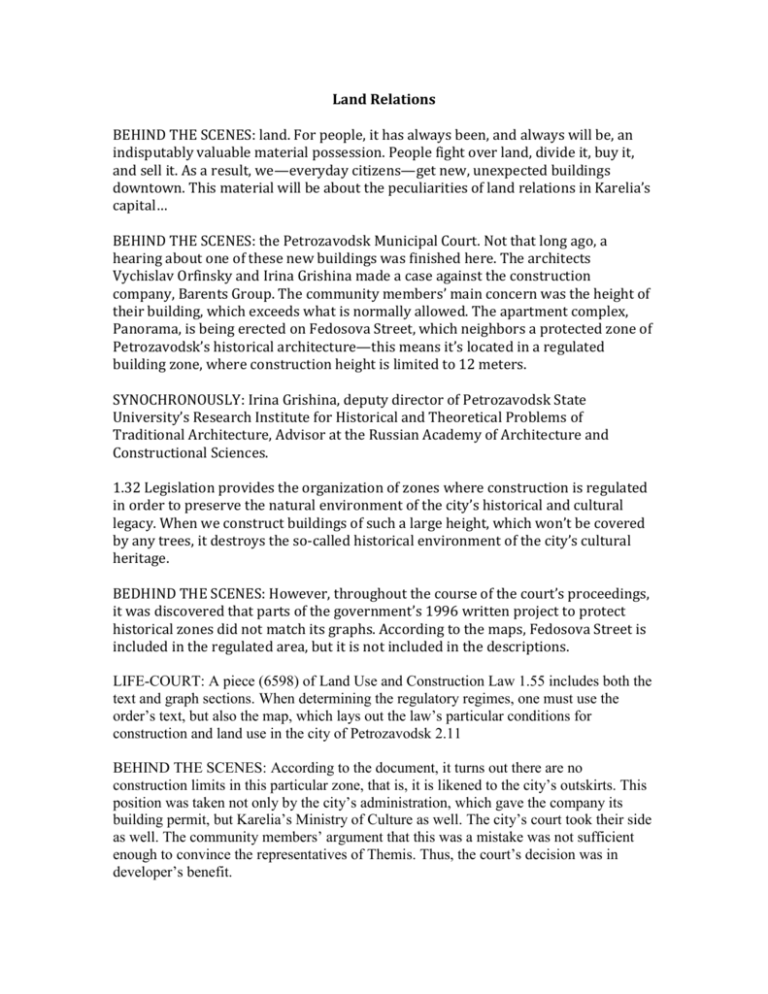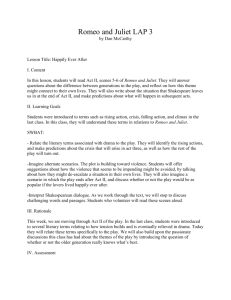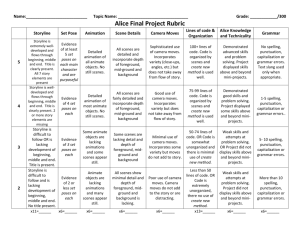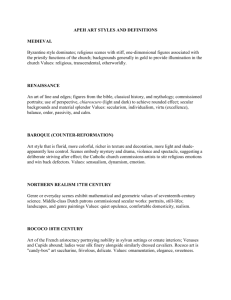English translation
advertisement

Land Relations BEHIND THE SCENES: land. For people, it has always been, and always will be, an indisputably valuable material possession. People fight over land, divide it, buy it, and sell it. As a result, we—everyday citizens—get new, unexpected buildings downtown. This material will be about the peculiarities of land relations in Karelia’s capital… BEHIND THE SCENES: the Petrozavodsk Municipal Court. Not that long ago, a hearing about one of these new buildings was finished here. The architects Vychislav Orfinsky and Irina Grishina made a case against the construction company, Barents Group. The community members’ main concern was the height of their building, which exceeds what is normally allowed. The apartment complex, Panorama, is being erected on Fedosova Street, which neighbors a protected zone of Petrozavodsk’s historical architecture—this means it’s located in a regulated building zone, where construction height is limited to 12 meters. SYNOCHRONOUSLY: Irina Grishina, deputy director of Petrozavodsk State University’s Research Institute for Historical and Theoretical Problems of Traditional Architecture, Advisor at the Russian Academy of Architecture and Constructional Sciences. 1.32 Legislation provides the organization of zones where construction is regulated in order to preserve the natural environment of the city’s historical and cultural legacy. When we construct buildings of such a large height, which won’t be covered by any trees, it destroys the so-called historical environment of the city’s cultural heritage. BEDHIND THE SCENES: However, throughout the course of the court’s proceedings, it was discovered that parts of the government’s 1996 written project to protect historical zones did not match its graphs. According to the maps, Fedosova Street is included in the regulated area, but it is not included in the descriptions. LIFE-COURT: A piece (6598) of Land Use and Construction Law 1.55 includes both the text and graph sections. When determining the regulatory regimes, one must use the order’s text, but also the map, which lays out the law’s particular conditions for construction and land use in the city of Petrozavodsk 2.11 BEHIND THE SCENES: According to the document, it turns out there are no construction limits in this particular zone, that is, it is likened to the city’s outskirts. This position was taken not only by the city’s administration, which gave the company its building permit, but Karelia’s Ministry of Culture as well. The city’s court took their side as well. The community members’ argument that this was a mistake was not sufficient enough to convince the representatives of Themis. Thus, the court’s decision was in developer’s benefit. SYNCHRONOUSLY: Vyachislav Orfinsky—Doctor of Architecture, active member of the Academy of Architecture and Construction Sciences 7.46 Now there is a pretty paradoxical situation—Not only do the organizations that are designed to defend our cultural heritage not defending it, they’re trying to blur the truth. They’re doing this even when it’s obvious that something isn’t right. 8.00 BEHIND THE SCENES: An interesting fact contained in this history is that originally-in 2010—the developer was issued this lot to build an administrative building. On the urban development map of 2008, the zone is marked off for public/business use. However, on September 9, 2013, city officials signed an ordinance allowing for the building to be reconstructed into a huge apartment complex. Ilya Gavrushev, the director of Barents Group declined to comment about this change on camera. In a personal conversation, he at first claimed that the area on Fedosova Street had always been designated for housing. Although he soon recalled, that a small office building had originally been built there, put into operation, but was then reconstructed. The developer saw, that the demand and interest in this location was in housing. After all, to live on the water was much more pleasant than in remote areas. So when the opportunity to build apartments arose, these entrepreneurs decided to do so. SYNCHRONOUSLY: Anastasiya Ulyanova—Head of the Department of Architecture and Urban Development of Petrazavodsk-2.45 Originally, if we are a speaking about Aquamarine, this piece of land was granted for the construction of an administrative, public complex. Recently the developer, having completed the first stage of construction, claimed ownership of the building, and acquired ownership of the land. 3.12 BEHIND THE SCENES: In accordance to the General Plan, this piece of land is also located in a public-business zone. It was issued to be a public-administrative complex with underground parking in August 2007, and on December 17, the Ministry of Industry and Natural Resources of Karelia made the preliminary decision that the company Kapel would be the developer. However, three years had passed and no construction was conducted. Only on July 16, 2010 did the Ministry of Natural Resources of Karelia, without an auction or bids, grant Kapel the land, and close a deal about the construction of a administrative-public complex. In April 2011, the internet newspaper Capital on Onego, wrote of how July 16, 2010 was no accidental date: BEHIND THE SCENES: Then, in the spring of 2011, colleagues of Petrozavodsk’s administration were constantly asking the question—what was going to be built on the shore of Lake Onezhsky? The answer was an administrative-public complex. What resulted—we see today. Aquamarine takes up only part of the area on which the developer was to build an administrative building. As one can see on the public cadastral map, Aquamarine takes up 5 hectares. A building is being constructed on the remaining 3.5, and it’s not administrative in the least. SYNCHRONOUSLY: Ulyanova 3.12 The land code provides building owners the right to acquire the land on which it is built. Recently, after the developers became the land’s owners, they changed what they were allowed to build into a multistory apartment complex. Housing construction is allowed in this area. It was through this mechanism that it became possible on this piece of land. 3.50 BEHIND THE SCENES: It turns out, that the land was issued to the developer to rent. In the City Hall, they’ll confirm that rent for social organizations is much less than housing. After several floors are constructed, it can be redeemed, and according to statute 36 of the Land Code, the owner acquires the land, which he has the right to do whatever he wants with. As a rule, he wants to sell expensive housing. Builders are also assisted in their plans by the updated Water Code of 2007. Building housing on the water—in a conservation zone—has become much simpler. Earlier, privatization of such areas was forbidden, so building without the permission of the Federal Water Resource Agency was problematic. As of 2007, these restrictions have disappeared. BEHIND THE SCENES: In 2010, the city’s administration rented land to the company Investment Partnership for them to build a social enterprise. No work was conducted for two years. Construction began in 2012, and was completed in 2013 as a youth club with an internet café. But that is only according to the documents. In reality the enterprise looked like this—a single story building without windows, doors, or a roof. By August, this so called “social enterprise” was bought by the company Clean City. However, in December, the company received permission to reconstruct the building into a 9-storied apartment building. Residence of buildings nearby were against such a change—they met with the developers and city administrators, wrote complaints to the Public Prosecutor’s Office, and were even ready to go to court. However, on January 22, 2014, Clean City posted an announcement on their official site which declared: GRAPHICS “As a result of citizen disapproval, the management of Clean City has made the decision to not build a 9-story apartment building at Karelsky Prospect 8.” ULYANOVA: 14.38 We checked the documents and found that the administrative building’s entry way violated their conditions, so on the basis of this, we, the administration, based on the decisions of the Ministry of Construction, canceled the decision to reconstruct it. 15.02 BEHIND THE SCENES: The scandal over the supposed administrative building heated up in the beginning of 2014. At that time, a sign appeared on the fence around the Nature Center’s construction site, which announced that block sections of it were up for sale. The price of one square meter was 55 thousand rubles. Outraged, the public demanded that the owners be controlled. SYNCHRONOUSLY: “If it was planned as a Nature Center, if that is what had been thought up, then let there be a Nature Center. These innovations are only of interest to developers—to make a profits,”—says Natalya Todua, a Petrozavodsk resident. BEHIND THE SCENES: According to all the documents, alongside culturally significant architecture of the 19th century, the developer was supposed to construct a building for cultural and historical purposes—the Nature Center of Karelia. That was what it was for, at least if we are to believe the public cadastral map. However, the administration had no legal leverage over the developers. The site had been private for a long time, which means the owners can do whatever he wants with it. The original intention, under which the lot was issued, doesn’t matter. The owners themselves made no effort to hide this— the name “Nature Center” doesn’t obligate them to anything. SYNCHRONOUSLY: “Our customers choose the allotted block sections themselves— they can be used as a public organization, offices, or as living quarters,”—says Yelena Smirnova, a representative from the developing company, Elite Trade Service. BEHIND THE SCENES: To this day, remodeling is being carried out in two of the Nature Center’s sold sections—a timid construction worker confirmed that two out of the three block sections have been sold. In the City Hall they say that according to all the documents, the building is still considered administrative. SYNCHRONOUSLY: Ulyanova: 11.20 This structure is labeled as an administrative building. It was built as an administrative building. Today, the Nature Center is an administrative, not residential. 11.30)) BEHIND THE SCENES: But no one is forbidding anyone from living in such a building—one of its main inconveniences is higher utility fees. But is that really a problem for people who can afford to buy an apartment for 10 million rubles? BEHIND THE SCENES: There’s other, no less cunning maneuvers for getting tidbits of city land to build housing. Not that long ago, the movie theater, Sampo, an undeclared piece of Petrozavodsk’s cultural heritage, still stood. Today, a massive apartment complex is being built in its place. The community member, Gregory Fandeev, who two years ago fought for the movie theater’s preservations, calls today’s undertakings “vandalism.” SYNCHRONOUSLY: Gregory Fandeev: 1.03 The building struggled, obviously no one wanted to keep it up, then it was left in a terrible state, that is, its heating and electricity were turned off, then it went into hibernation, a few seasons passed, and we were told that supposedly there’s not enough money to renovate it, the land beneath it was privatized, and became generally larger than what was necessary to operate the building. 1.20 BEHIND THE SCENES: That’s what happened with what is already the former Sampo. The building wasn’t used according to it’s original function since the 2000s. In 2009, officials decided the building’s upkeep was too expensive, so they put it up for sale. In 2011, with the city council’s support and consent, the new owners, Rinda, increased the area and turned it into a residential zone, and in 2012, set about demolishing the building. All of the community’s attempts to prove that the 1941 structure should be considered a piece of cultural heritage were in vain. Now citizens are watching the construction of yet another high rise. BEHIND THE SCENES: According to the rough estimates of volunteers, an adjusted map shows that in the past 5 years, around 40,000 square meters of administrative buildings have been converted into housing. Oftentimes decisions about such construction was brought to the public’s attention only after it was too late. Today, it is mandatory that all changes in urban developments plans are submitted to a public hearing, and discussed by the city’s urban development council. However, in previous years this rarely happened. SYNCHRONOUSLY: Yelena Itskikson—architect: 3.12 The last administration organized council meetings for urban development very rarely. Although they did nominally exist, and there were statutes, there was basically no council. It happened that if a decision was categorically opposed or argued against, then it would simply not be brought before the council. 3.43 BEHIND THE SCENES: According to city council member, Oleg Fokin, today the order by which land is changed from one zone to another is much more transparent than it was in the early 2000s. SYNCHRONOUSLY: Oleg Fokin, Petrozavodsk City Council member- 6.40 No matter the type of zone, it is first brought before a public hearing, after which the commission meets in the City Hall, where they examine the project and then submit it to the deputies for further examination. 6.52+2.39 There are examples of dishonest entreprenuers who were able to maneuver around today's legislation. BEHIND THE SCENES: Some deputies play a much larger role when it comes to construction on the city's territory. BEHIND THE SCENES: In the meantime, citizens of Petrozavodsk are pained by the new look of their city. It changes with every year, with new buildings popping up like mushrooms after the rain. One after another, Panorama, Aquamarine, the Nature Center could appear here—on the banks of the Neglinka River, at the site of a two-storied wooden house. For now, Russia's political atmosphere regarding urban planning is threatened only by these words of conventional wisdom: «Generally speaking, it's forbidden to build housing on land alloted for administrative establishments. But if you really want to, then you can.» The blind spots in Russian lawmaking, with which deputy developers are well aquainted with, allow them to easily bypass all possible obstacles to their making maximum profits. Their only possible limitation—moral conventions— ceased playing a role in the dismanteled conventions of the construction business long ago. Anya Yarova Translated by Anne Redmond








